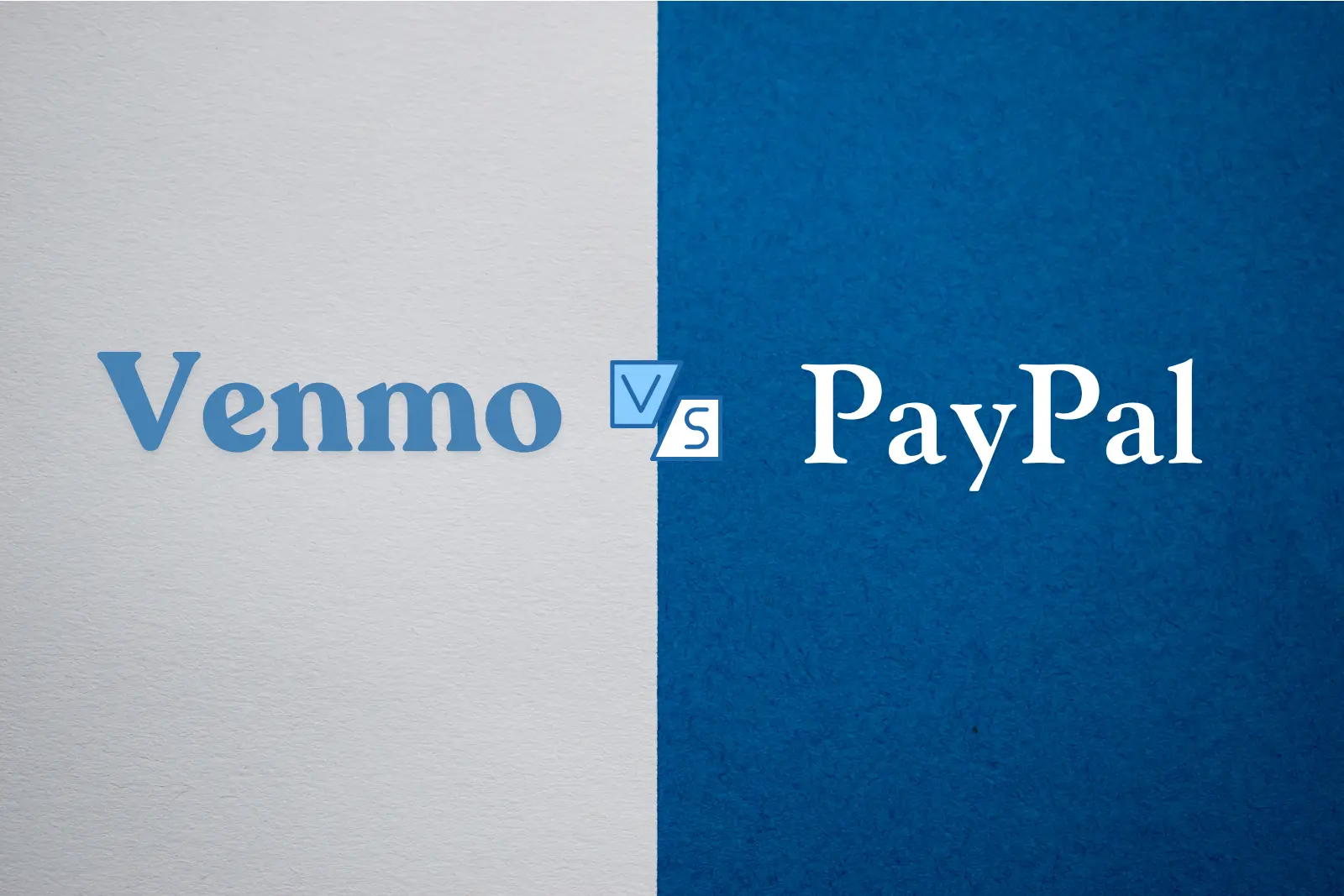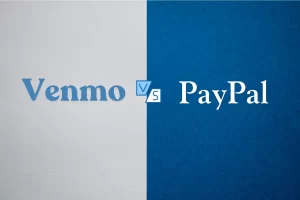While paying online it is possible that you will be confused whether to use Venmo and PayPal when you are trying to decide which one is best suited to your requirements. Venmo vs PayPal both these competitive online payment platforms offer different features that are helpful to specific use scenarios, which can affect your choice for business or personal payments. This blog will look into the pros and cons of each payment platform to help to make a well-informed choice that’s in line with your financial needs and objectives.
Understanding Venmo vs PayPal
The two main platforms who controls the online payment market are Venmo and PayPal. Each platform has unique features designed to meet the requirements of the user, which makes it important for you to be aware of the differences between them to decide which is the best option for your business or personal transactions.
Types of Transactions
Although each Venmo and PayPal provide various types of transactions, however their focuses are different.
| Venmo Transactions | PayPal Transactions |
| Peer-to-peer transfers | Transactions in business |
| Split the cost of bills between friends | Online payment for shopping |
| Social aspects | Invoicing capabilities |
| International use is limited. | Global acceptance |
Any platform will be able to satisfy your requirements, contingent on the specifics that you conduct your business.
Key Features Venmo vs PayPal
Transactions with Venmo and PayPal include a variety of key features that improve the user experience. In addition, these features may significantly affect how you use the services.
- Mobile apps for users that are user-friendly
- Quick transfers among users
- Bank account linking to cards
- Tracking of transaction history
- Security protocols that include encryption
Understanding the subtleties of these features will help you to make educated choices on the right platform to meet your requirements.
The features of Venmo focus more on social transactions, which allows users to pay for friends’ dinner or to split expenses easily while PayPal concentrates on business-related functions including invoicing and comprehensive protections for purchases. Each feature plays an important part in the general utility.
- Social feeds for transaction sharing
- Bill splitting and payment request capabilities
- Integration with platforms for e-commerce
- Ability to hold money in different currencies
- Customer service support options
Understanding these capabilities will help you know how to best utilize any platform that is appropriate for your particular circumstance.
Pros and Cons of Venmo
There are many reasons to consider Venmo beneficial for fast and easy transactions, however it has a few drawbacks too. Here is an overview of the pros and cons of Venmo:
| Pros | Cons |
|---|---|
| Rapid transfers between users | Businesses have limited payment options |
| Mobile app that is user-friendly | The feed for public transactions could affect privacy |
| There are no fees for personal transactions. | Not ideal for larger businesses |
| Social features integrated into the system | Limits on transactions for users |
| Instant transfer of funds | Limited customer support |
Advantages for Personal Use
To make your personal transactions more enjoyable, Venmo offers easy splitting of payments and bills among friends, making social interaction effortless. With its free transfer feature and the capability to send money directly through the bank account of your debit or credit card you will be able to have a smooth and easy transaction. The social feed feature provides an element of entertainment by allowing you to follow the activities of your friends, which can be interesting and informative.
Limitations for Business Use
Certain limitations are encountered when you use Venmo to conduct business. Although it is a great option for private use, businesses are faced with limitations, such as a lack of options for processing payments and less connections to accounting programs that can make it difficult to manage finances.
It’s crucial to realize that Venmo was initially designed to be used for private transactions, therefore the use for business transactions may not provide the capabilities you’re looking for. For instance, you’re restricted to accepting payments from those who are Venmo account holders and there’s the strict limit on the amount of transactions. This makes it difficult to manage financial transactions of greater size effectively. In addition, Venmo lacks comprehensive reporting tools, which can hamper the process of bookkeeping and reconciliation to be more efficient for companies.
Pros and Cons of PayPal
Your choice to utilize PayPal has many benefits and disadvantages that influence both business and personal transactions. Here’s a breakdown of both the advantages and disadvantages with PayPal.
Pros and Cons of PayPal
| Pros | Cons |
|---|---|
| The method is widely accepted by retailers | Charges can be very high for transactions |
| Advanced security features | Limits on accounts and holds |
| International payments are supported | Complex fee structure |
| Support for customers is reliable and prompt. | Transfers of funds are slower |
| Analytics and tools for business | Not intended for use in casual transactions. |
Benefits for Businesses
For business, PayPal offers several benefits like the ease of integration with online shopping platforms, professional invoicing capabilities as well as the ability to accept a variety of payment options. This allows your business to reach out to a wider market, increasing customer satisfaction and the potential for sales. Furthermore, PayPal provides valuable analytics which help you analyze the business’s performance more effectively.
Drawbacks for Personal Use
The drawbacks of the use of PayPal for personal transactions could include higher charges when compared with other platforms, specifically for transfers that are instant. Furthermore, the requirement of an account that is verified could be a problem for those who are not familiar with the platform.
This fee structure could make PayPal less attractive for personal use, particularly when it comes to sending money to relatives or friends. Many people find alternatives such as Venmo provide better user experience and less fees. This is why when you’re regularly making personal transactions, taking a look at these aspects will allow you to choose the right option for your needs.
Factors to Consider When Choosing Venmo vs PayPal
Contrary to other platforms, choosing among Venmo vs PayPal requires a thorough evaluation of various aspects to make sure that it meets your requirements. Think about the following:
- Personal or. business
- Transaction fees
- Integration capabilities
- User experience
Make sure that weighing these elements is in line with your financial goals and the requirements for transactions. To get a more in-depth look Venmo as compared to PayPal for Business: Which is better?, continue exploring.
Transaction Fees
If you’re thinking about transaction costs it’s important to look at the fees Venmo and PayPal cost fees for services. Venmo provides free transactions to personal accounts when you’re using your balance or associated bank account however it they charge for credit card transactions. PayPal however, charges the cost of any business transaction, making it essential to know the frequency of transfers funds.
User Experience
The user experience is the most important factor in deciding between the two platforms. Venmo is designed for speedy transaction, casual as well as social features, whereas PayPal is an elegant interface designed for transactions in business.
Another element of the users’ experience revolves around the speed at which transactions can be completed. Venmo’s real time transfers offer instant satisfaction, which is appealing to those who require fast payment. The processing of PayPal takes longer, however it comes with strong features for expansive business operations. It offers the right balance of speed and efficiency.
Steps to Setting Up Venmo
As always, setting up Venmo is an easy procedure that improves your capability to transfer and receive money quickly. Take these actions to start.
| Step | Description |
|---|---|
| Download the App | Install the Venmo application through on the App Store, or Google Play. |
| Create Your Account | Register by using your email address or phone number. |
| Verify Your Identity | Include the necessary information, such as your name and your social security number. |
| Add a Payment Method | Join your bank account and debit card to make transactions simple. |
Getting Started
When you’re ready to embark on your journey using Venmo begin by downloading the application. After installation, you’ll be able to create an account. Make sure you have your phone number or email in hand to sign-up so that you can receive confirmation codes in a snap.
Linking Accounts
A crucial step in maximising the utility of Venmo is to connect the account to your debit or bank card. This allows you to transfer cash more quickly and also receive payments directly to the account you choose.
In addition, integrating your accounts allows for immediate transfers, which gives you greater flexibility in money flow. In addition, it can allow users to gain access to features like Venmo’s debit cards, which provide the ability to buy items using your Venmo balance. This can improve the overall experience of your customers which makes transactions quicker plus more productive.
Steps to Setting Up PayPal
Once you’ve decided to make use of PayPal to make payments, establishing your account is easy. Follow the steps as laid out in the following table to get started:
| 1. Visit the PayPal site or download the application. |
| 2. Click on “Sign Up”. |
| 3. Select between a Business or Personal account. Business account. |
| 4. Input your email address to create a password that is secure. |
| 5. Make sure you complete your profile with personal details. |
| 6. Connect your credit or bank account for quick transactions. |
Account Registration
Start by going to the PayPal application or website, and clicking “Sign Up.” Choose between a Business or Personal account, based on the needs of your. Follow the instructions to input your email address and set up a secure password. Complete your personal information for the final step of registration. This simple procedure makes it easy to start using PayPal.
Payment Processing
For both individuals and businesses, PayPal offers seamless payment processing capabilities that allow transactions through a variety of ways. When you connect your bank account to your credit card account, or accepting direct payments by others PayPal customers, PayPal will be able to quickly and effectively manage your financial affairs.
You can, for instance, install payment buttons for your site, which allows customers to pay immediately through PayPal. This feature makes online sales easier and allows customers to pay securely, without leaving your site. PayPal also offers tools for invoicing and recurring bill that make it easier for you to handle subscriptions as well as services. With these features integrated making transactions effortless for you and your clients.
Summing Up the comparison Venmo vs PayPal
The final decision, Venmo vs PayPal, is dependent on your individual requirements. If you are looking for speedy and simple transactions for your personal use, Venmo may be the best choice for you. If you need extensive business features and more choices for payments, PayPal is likely more appropriate for your requirements. In the end, taking a look at your habits and preferences will help you make the right choice for personal as well as business transactions.







